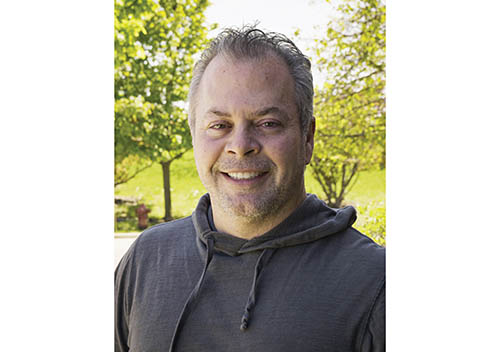— By John Fairclough —
Be the facility director great vendors want to work with.
Great vendors don’t just want work. They want to do work that matters.
They want to be appreciated, challenged and trusted. They want to be part of a team that delivers with pride. And the best ones? They have options.
That’s why the facility director sets the tone, not just for internal teams but for every vendor interaction. Here’s a story about one world-class facility director — we’ll call her “Amy” — who brought out the best in everyone around her.
Amy wasn’t from the facilities industry. But she was obsessive about the customer experience at her retail company. And it wasn’t the budget, the tech stack or her titles that made her stand out. It was the way she ran her FM program, with clarity, trust and a spirit of shared ownership. Vendors talked about her the way elite athletes talk about coaches who made them better.
She Loved the Intensity
Amy often said she loved “the intensity of the work.” That line captured what the best facility directors thrive on: fast pace, high stakes and constant problem-solving. But that kind of intensity only works when it’s mutual.
In the service business, there must be a spirit of “no matter what.” That’s difficult to give when the client doesn’t give much back. Amy gave it in spades. Vendors knew they were replaceable, but they were treated like they were wanted in the room — especially when a project went sideways.
Helping Vendors Win
Amy didn’t just assign work and hope for the best. She made it her responsibility to help vendors be successful. She understood that optimization begins by making it easier to complete the work.
She looked inward as often as she looked outward. She cleared up approval delays, clarified scopes and trained store teams to engage vendors respectfully and efficiently. As she raised expectations externally, she removed obstacles internally. That balance enabled her partners to eliminate waste and perform at a higher level.
Turning Clients Into Teammates
Working with Amy, a former retail facilities director, didn’t feel like servicing an account. It felt like joining a mission. And that wasn’t by accident.
She established fixed fees on recurring and standard-scope items, eliminating endless quote approvals. She developed a ‘standard of care’ that included materials, timelines and expectations — and she invited vendors to help write it.
Her department became a launchpad for talent. Many who worked under her went on to become facility directors at other well-known brands.
She wasn’t just running a program. She was developing leaders.
She Asked, Acted, Appreciated
When launching a new initiative, Amy didn’t hand down a rigid plan. She called vendors in early. She asked what they had seen work elsewhere. She asked what they’d change. Then she implemented what made sense, quickly.
She filtered data to find what was true 95% of the time, not just what was statistically average. That’s how she uncovered location-level patterns and systemic waste. She acted fast and made sure her partners knew how their input moved the needle.
In one instance, a technician drove overnight to fix an issue before a flagship store’s morning rush. Amy called him directly the next morning and said, “That didn’t go unnoticed. Thank you.”
That phone call cost nothing and it bought loyalty that lasted for years.
She Thought Like an Owner & Made Others Do the Same
Amy often challenged vendors to think like owners. “If you ran this department, what would you do?”
That single question sparked some of her most impactful process improvements.
One vendor suggested opening limited access to their tech availability system, making it easier to schedule emergency calls during blackout periods. Another helped design a smarter intake process to capture third-party damage information. That idea alone led to the recovery of over $1 million in damages — funds that would have otherwise been lost.
By involving vendors in optimization, Amy tapped into underused intelligence and made her budget go further than anyone thought possible.
Navigating the Recession with Ingenuity
During the Great Recession, Amy and her FM team were handed an impossible task: cut budgets without cutting services. At first, she trimmed vendor spend equally. But she quickly pivoted to a smarter strategy, preserving her top vendors and redefining internal standards.
The results were extraordinary. She reduced the average invoice amount on basic work orders by 22%, despite an already tightly managed operation. She proved that cutting budget doesn’t have to mean cutting service. It required relentless creativity, the kind of ingenuity only extreme conditions can draw out.
Her rallying cry during this time was simple. “I need to be able to trust you.” When she said it, vendors felt it. It wasn’t just a requirement. It was a charge. She was banking on them, and they didn’t want to let her down.
The Results Were Real
Costs went down. Resolution times sped up. But more than that, Amy created space for her team to lead, for vendors to perform and for the chaos to quiet down.
She didn’t manage through pressure. She led through partnership. She turned transactional work into shared responsibility. And that changed everything.
Years later, after Amy retired, one of her longtime vendor partners met her for lunch. He told her, “You made us a better company. Thank you.”
That wasn’t just sentiment. It was the truth.
Lead the Way, Your Way
Facility leaders don’t need a bigger team or a new platform to become better partners. They need to lead with clarity, partnership and accountability — the same qualities that made Amy an extraordinary leader in her field.
If you want better vendor performance, start by being the kind of client you’d fight to keep.
• Make success clear and mutual.
• Clear the roadblocks on your side.
• Ask for ideas and act on the smart ones.
• Build systems that reduce noise, not add to it.
• Recognize real effort, out loud.
Partnership is a performance tool. Use it well and it won’t just improve results. It will elevate everyone involved. n
— John Fairclough is CEO of Thoreau Facility Services and creator of SmartSpend™ — the facility optimization solution that works. Thoreau is based in Woodridge, Ill. For more information, visit www.thoreauservices.com.

